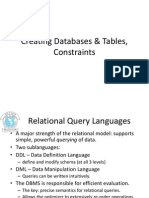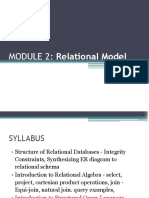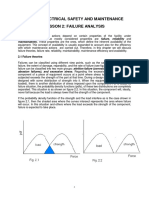0% found this document useful (0 votes)
28 views95 pagesEND213E Lecture5
SQL, originally developed by IBM in the 1970s, has evolved into the standard relational database language, with multiple versions released by ANSI and ISO. It includes various categories of statements such as DQL, DML, DDL, and DCL for querying, manipulating, defining, and controlling data. The document also covers SQL syntax, integrity constraints, and examples of creating tables and inserting data.
Uploaded by
osmans.koybasiCopyright
© © All Rights Reserved
We take content rights seriously. If you suspect this is your content, claim it here.
Available Formats
Download as PDF, TXT or read online on Scribd
0% found this document useful (0 votes)
28 views95 pagesEND213E Lecture5
SQL, originally developed by IBM in the 1970s, has evolved into the standard relational database language, with multiple versions released by ANSI and ISO. It includes various categories of statements such as DQL, DML, DDL, and DCL for querying, manipulating, defining, and controlling data. The document also covers SQL syntax, integrity constraints, and examples of creating tables and inserting data.
Uploaded by
osmans.koybasiCopyright
© © All Rights Reserved
We take content rights seriously. If you suspect this is your content, claim it here.
Available Formats
Download as PDF, TXT or read online on Scribd
/ 95






















































































